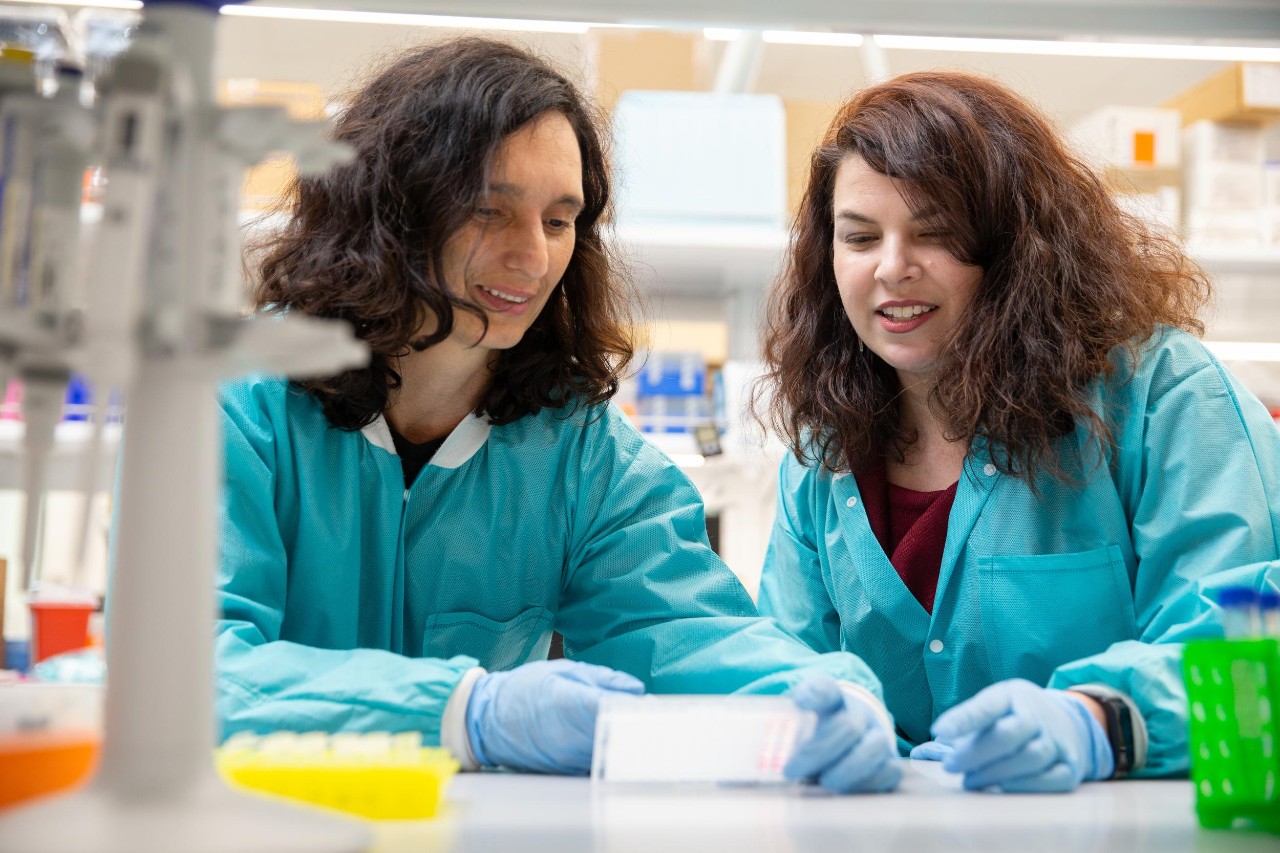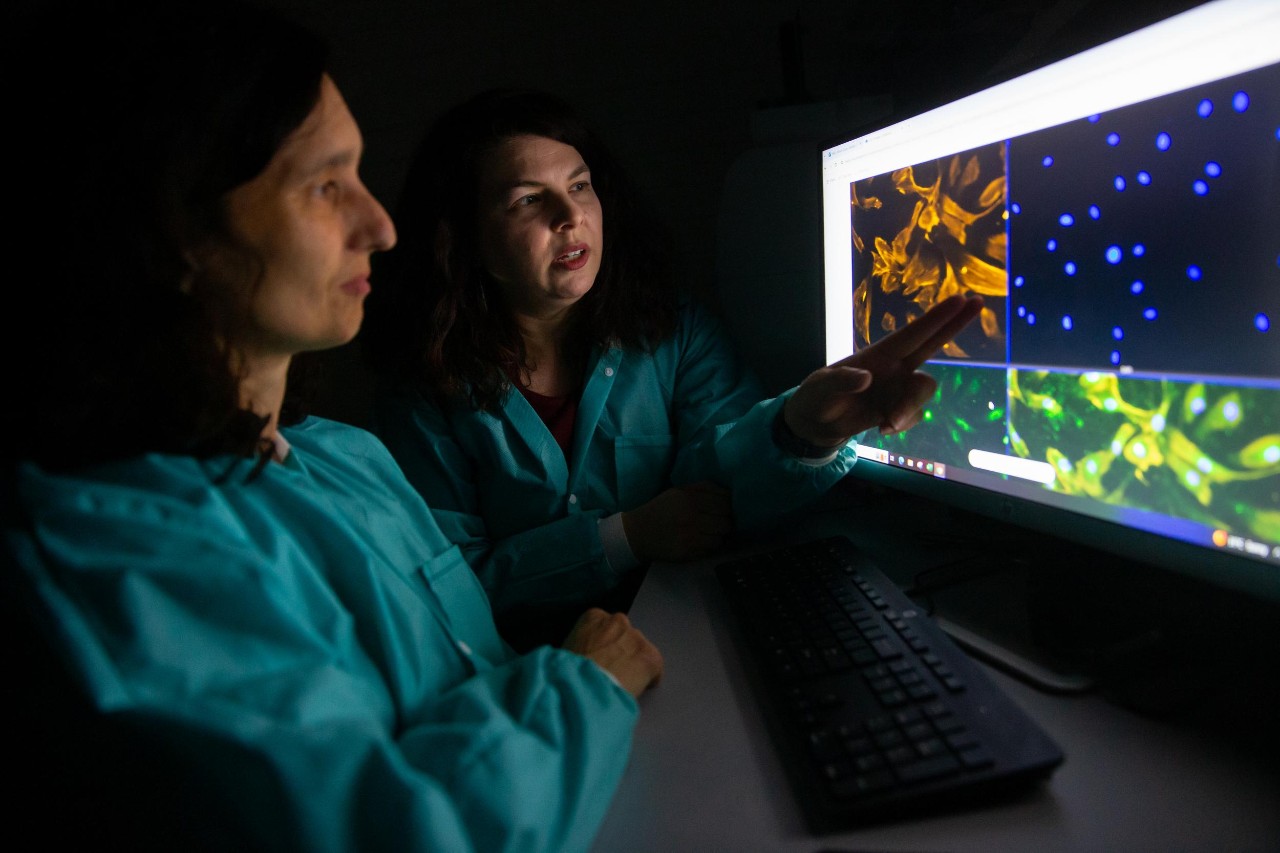
U.S. News: New insights into fibroids might lead to better treatments
UC researchers reveal ways fibroids respond to strain compared to uterine cells
U.S. News & World Report highlighted the University of Cincinnati's research into new avenues to treat fibroids, a painful condition that affects 8 in 10 women during their lifetimes.
Researchers in UC's College of Medicine and College of Engineering and Applied Science found different signaling pathways being used by the fibroid cells compared to the uterine cells.
“That’s important for identifying therapeutic targets because we want to target the tumor without affecting the surrounding tissue,” said Stacey Schutte, an assistant professor of biomedical engineering in UC’s College of Engineering and Applied Science.
The study was published in the journal F&S Science.
In their study, fibroid cells and uterine cells were grown in the lab on plates with an elastic bottom. Researchers then used a vacuum to pull and stretch the cells, mimicking the uterine environment. They saw differences in the way cells held their shape.
"We found that fibroid cells were more sensitive to strain," said lead author Dr. Rachel Warwar, from the University of Cincinnati's College of Medicine. She said the findings underscore the importance of incorporating mechanical strain, and not just hormones, into the study of fibroid cells.
"The more we are able to mimic the environment of these cells in the uterus, the more we will understand the pathology of these cells and then can work to target anomalous pathways in fibroid cells," Warwar added.
Read the U.S. News & World Report story.
Featured image at top: UC Research Associate Andreja Moset Zupan, left, and Assistant Professor Stacey Schutte study new avenues to treat fibroids in Schutte's biomedical engineering lab. Photo/Andrew Higley/UC Marketing + Brand

UC Research Associate Andreja Moset Zupan, left, and Assistant Professor Stacey Schutte study new avenues to treat fibroids in Schutte's biomedical engineering lab. Photo/Andrew Higley/UC Marketing + Brand
Related Stories
UC Research Ranking Climbs
January 10, 2002
The University of Cincinnati moved up in two different national rankings established by the National Science Foundation (NSF) to compare college and university research efforts.
Three of Four UC Fulbrights Scholars from McMicken
January 28, 2002
Tainted water supplies in Bangladesh, international security and missile defense, transformations in Mexico and greater understanding of India - this varied list sums up the work of four Fulbright Scholars at the University of Cincinnati who are concentrating on real-life issues involving our neighbors around the world.
Celebrating CAS' Deep Roots in Cincinnati
November 11, 2002
UC s College of Applied Science (CAS) is set to celebrate its rich heritage as the quiet cornerstone upon which Cincinnati industry, learning and culture has built itself since the school s founding on Nov. 20, 1828. The school was founded as the Ohio Mechanics Institute, the first school dedicated to technical education west of the Alleghenies. On Wednesday, Nov. 20, the college will toast its birth with a Founder s Day reception from 4:30-6:30 p.m. in the first floor of the CAS Administration Building, 2220 Victory Parkway.
Students Step Up to the Plate for this Final Exam
November 26, 2002
Civility is the main course for UC students set to take their final exam at Pigall's restaurant on December 4.
Bono, Chris Tucker Visit UC To Discuss Africa
December 5, 2002
U2's Bono and comedian-actor Chris Tucker led a delegation from the DATA organization who came to UC to talk about potentially catastrophic problems in Africa.
New Year's Help for Those Looking to Kick the Habit
December 20, 2002
Quitting smoking consistently ranks among the top three resolutions made by New Year's resolvers each year.
E-BRIEF: Let's Toast to a Healthier 2003
January 8, 2003
The New Year often means a new health kick: Vows to tone up and trim down, and maybe going to the doctor and getting ourselves as regularly "maintenanced" as we do our cars. So, this week's University of Cincinnati e-briefing examines the health concerns of the young and old, and what you should be doing to preserve your good health.
Today's ML King Events: One On, One Off
January 8, 2003
A memorial march, presentations, poetry and dance will pay tribute to the slain civil rights leader.
UC Named Lead Organization for OSHA Training Consortium
January 13, 2003
UC Continuing Medical Education (CME) has been selected as the lead organization for the Occupational Safety and Health Administration (OSHA) Great Lakes Training Consortium by the U.S. Department of Labor.
Ignorance of Stroke s Warning Signs a Barrier to Treatment; More Education Needed, UC Researchers Report in JAMA
January 13, 2003
Demographic groups facing the greatest risk of death and disability from stroke are the least likely to recognize stroke s warning signs and risk factors, according to a study by UC researchers published in the January 15 issue of the Journal of the American Medical Association (JAMA).
